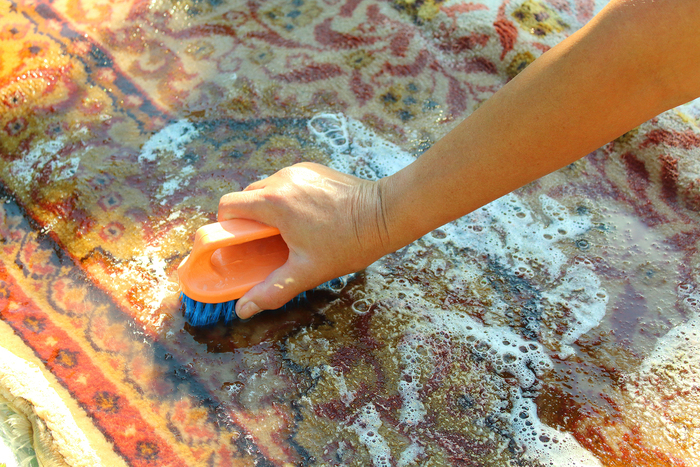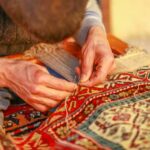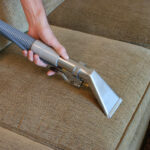Oriental rugs are some of the most desirable rugs you can buy and own, and with the right care and cleaning attention they can last for many years.
When it comes to cleaning your Oriental rugs, having the right knowledge and information at your fingertips is essential. Here’s everything you need to know.
1. Why rug cleaning is important
No matter where a rug is situated, or what type of rug you own, it will need regular cleaning if you want it to retain a spotless, fresh and hygienic condition, and endure a long and healthy lifespan.
Oriental rugs are often considered as a luxury or investment purchase, and for many people they’re even regarded as an art form and a collector’s item, rather than just a mere accessory for the home. To help protect and preserve your Oriental rugs and maximise your investment, looking after them with regular cleaning maintenance is vital.
2. Know your rugs
There’s no single type of Oriental rug, which means there is no one single way of cleaning them.
Therefore, knowing which kind of rug you own can ensure that it receives the right sort of cleaning to match its unique requirements. An Oriental rug made from wool, for instance, can have very different cleaning needs compared to an Oriental rug made from silk or synthetic fibres, whilst a suitable method for cleaning a flat-weave rug might not be recommended for a hand-knotted rug. A Persian rug, which is a type of Oriental rug, might also need to be cleaned in a different way compared to an Oriental rug from China or North Africa, for example.
If you’re unsure of the origin of your Oriental rug and what it’s made from, or how it should be cleaned and at what temperature, look to see if it has a label underneath it. This will detail how to clean the rug safely and whether it’s colourfast or not. If not, seek advice from professional rug cleaners.
3. Careful cleaning
Because of the delicate nature of Oriental rugs, many of which are hand made or have been constructed using natural dyes that may be prone to colour bleeding, it’s always really important to proceed with caution if you decide to clean an Oriental rug yourself.
Even if you clean an Oriental rug yourself, it will still need professional cleaning from an Oriental rug cleaning expert about once per year, or more often depending on how frequently the rug gets used. However, you can still maintain the appearance and condition of your Oriental rugs in-between professional cleaning.
4. Frequent vacuuming
Loose dirt, dust and dry soil can collect in your Oriental rugs, potentially damaging the delicate fibres through abrasive action. Regularly vacuuming your rugs on both sides can help to prevent this dirt from accumulating over time.
When vacuuming your Oriental rugs, always clean in the direction of the pile and use an attachment with a soft bristled brush. Never vacuum with a beater bar, as this could damage the fibres in your rugs. If a rug has fringe detailing, keep the vacuum cleaner away from these delicate strands.
If you own antique or silk Oriental rugs, frequent vacuuming isn’t recommended, so gently beat or shake the rug outside instead to loosen dirt and dust particles.
5. Act fast when spills occur
As with any type of rug, when spills occur on your Oriental rug, it’s important to act quickly to prevent the spillage becoming a permanent stain. Gently blot the spillage with an absorbent towel or clean cloth, avoiding rubbing or scrubbing at it. If you need to use a cleaning solution to remove the spillage further, use a very mild product that’s designed specifically for Oriental rugs.
Never use any strong, acidic or alkali chemicals such as ammonia, vinegar, bleach or anything that could alter the delicate pH balance of your Oriental rug. It could cause permanent damage to the rug’s fibres and discolour it. Even applying too much water to an Oriental rug may cause it harm, so if you don’t know what you’re doing, or you want peace of mind that your rug is being cleaned safely, talk to specialist Oriental rug cleaning experts for advice and assistance.
After an Oriental rug has been cleaned, it’s vital that it’s allowed to dry fully on both sides to prevent the formation of mould and mildew.
6. Caring for your Oriental rugs
You can also make sure your Oriental rugs remain in pristine condition by rotating them every few months to prevent wear and tear in one area. Avoid placing them in direct sunlight, as this may cause colours in a rug to fade, and don’t place heavy furniture on the rug, as this could leave indentation marks which may damage delicate fibres.
7. Professional cleaning
There’s no doubt that if you want your Oriental rugs to be cleaned as safely and effectively as possible, getting them professionally cleaned is the only answer. But bear in mind that not all rug cleaning companies have the knowledge or experience to clean Oriental rugs, so choose a specialist Oriental rug cleaning company that comes highly recommended.
For example, at our Oriental rug cleaning London spa, our technicians are fully equipped and trained to clean all styles of Oriental rugs, and we offer a 100% customer satisfaction guarantee, so you can be certain your rugs are in safe hands.
8. Professional rug cleaning process
Cleaning Oriental rugs professionally involves a methodical process, and in most cases, because of the delicate nature of Oriental rugs and the way they’ve been made, they generally require cleaning by hand. This usually involves taking the rugs away to be cleaned, rather than cleaning them on your premises.
At our Oriental and Persian rug cleaning London company, we provide a free pick-up and drop-off service when cleaning your rugs off-site, for your convenience. Our off-site facilities feature state-of-the-art cleaning equipment for all of your Oriental rugs.
9. Inspecting a rug
As previously mentioned, each type of Oriental rug can have very different cleaning needs, so professional rug cleaners will always start by fully inspecting each rug, getting to know what type of rug it is, what it’s made from, and assessing its general condition.
Many Oriental rugs have been made with natural dyes which can cause colour bleeding, so a professional rug cleaner will check a rug for colour fastness, and test its pH levels. With all the information gathered about a rug, it can then be given tailored cleaning that’s safe.
10. Rug dusting
Gritty, dry soil can accumulate in a rug, and if it isn’t fully removed, rug fibres could become worn and damaged. To get rid of the dry dirt in a rug, it is gently beaten with a special type of rug duster.
11. Washing the rug
Once the dry soil has been removed from the Oriental rug, it is then washed according to its individual needs. This usually involves immersing the rug in a special type of wash pit, where it will receive a refreshing soak and invigorating pamper.
12. Rinsing the rug
To remove the moisture from the rug and provide it with a thorough rinsing, it’s then usually placed in a fast-spinning machine called a centrifuge. The latest machines can extract up to 90% of the moisture from the rug, helping to reduce the length of time it takes to dry.
13. Drying the rug
Drying an Oriental rug should be given as much consideration as the washing process itself, so a rug is usually left to dry in an environment where the heat, humidity and temperature levels are carefully regulated.
A professional rug cleaner will carefully inspect your Oriental rugs before returning them to you, to make sure no dirt or debris remains.
Give our specialist Oriental rug cleaning London team a call when your rugs next need professional cleaning.







